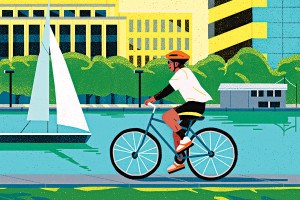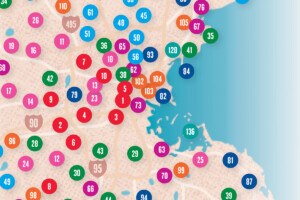The City’s Combing the Streets, Block by Block, to Make Improvements
There are more than 850 miles worth of streets, sidewalks, and squares that make up Boston’s neighborhoods, from Hyde Park to the Back Bay, and all the way to Charlestown—and Mayor Marty Walsh is determined to have members of his administration take a magnifying glass to every crack and crevice on each and every block.
“We are really excited to get out there,” said Jerome Smith, director of the mayor’s Office of Neighborhood Services, the branch of city government that will be heading a first-of-its-kind effort to comb through Boston to conduct what’s being called a “comprehensive audit” of every street in every neighborhood. “It’s just another way to engage with residents, and get them engaged in the community.”
Smith said when he started working with the city in May, Walsh challenged him to think about how how to approach neighborhood services differently.
“He was big on community engagement, so we were thinking about how we could do something different to have people come out and join us, and take ownership in their neighborhood,” he said. “So we thought, ‘let’s walk every street in the city.’”
Beginning September 15, Smith and a collective of city departments that includes Boston Police and Public Works crews, will officially launch the Neighborhood Engagement Walks initiative, or NEW.
The program will put 22 workers from the Office of Neighborhood Services on the ground with those departments to “assess each neighborhood in great detail” and jot down infrastructure needs, citizen gripes, and public concerns.
“I want them to know every inch of the area that they represent and the best way to do that is to get on the ground and in the weeds,” Walsh said in a statement Friday. “We can—for the first time in our history—truly assess every piece of this city, to better serve the people in our neighborhoods.”
ONS representatives will be strapped with special tablets that are connected to city services so that data can be logged accordingly. That data will then be organized by the Department of Innovation and Technology, and later shared with the community through a “story map,” where residents can visualize where certain problems and complaints are coming from. The map will show both the routes that the group will cover, as well as progress made on projects identified as issues plaguing specific neighborhoods.
Smith said the project, a two-part process that will be continued in the spring, will require a lot of walking and talking.
“The walking party could grow,” he said, adding that they’ll invite business owners and community organizations to join in. “It will be a huge group of people walking through the streets.”
He said the new process will challenge the status quo of how things get done in City Hall, and will be a mix of old-school canvassing matched with the technological advances that Walsh has been pushing.
“We put this plan together and the mayor thought it was a great idea, we got the go ahead, and we are glad to get out there and cover all the miles of the city,” he said.



